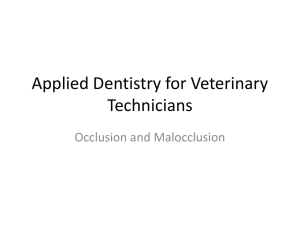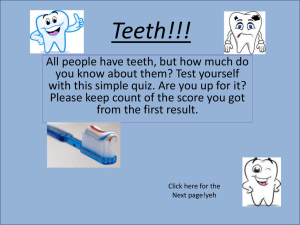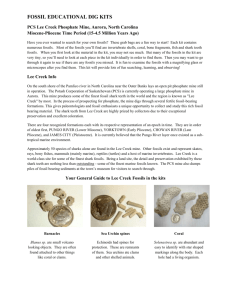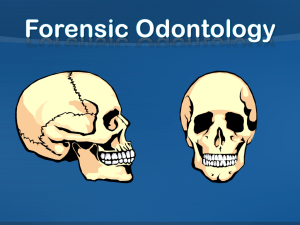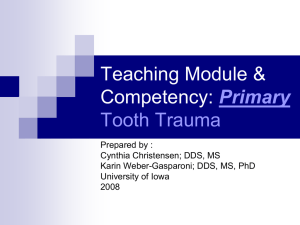Comparative anatomy lab
advertisement
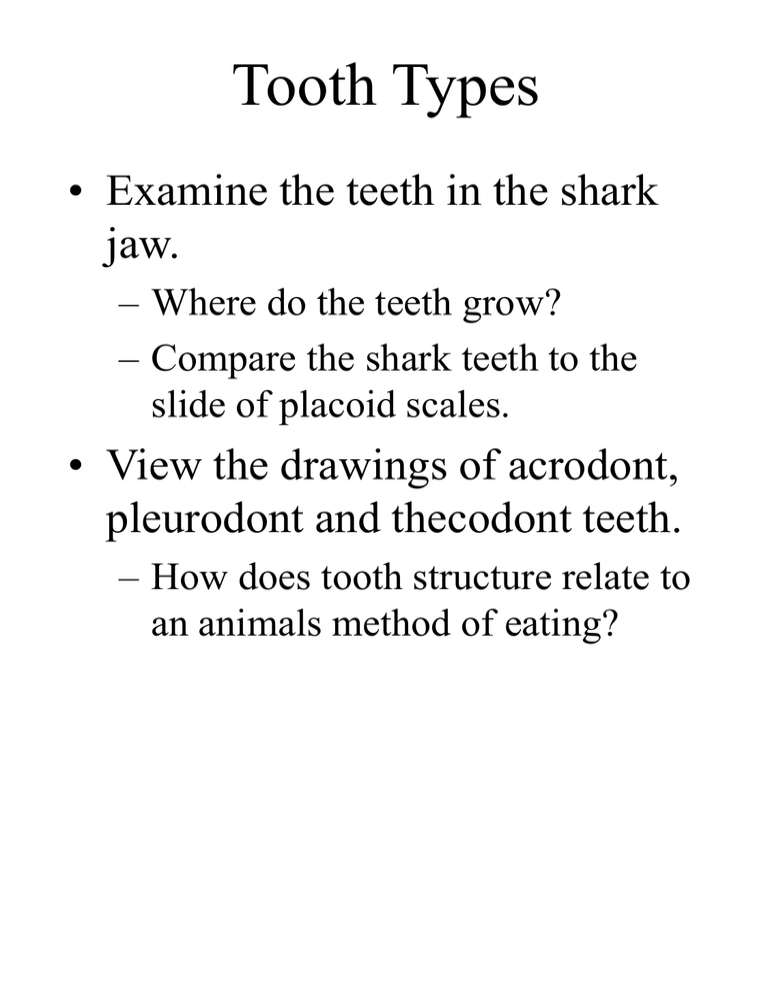
Tooth Types • Examine the teeth in the shark jaw. – Where do the teeth grow? – Compare the shark teeth to the slide of placoid scales. • View the drawings of acrodont, pleurodont and thecodont teeth. – How does tooth structure relate to an animals method of eating? Modified Scales Chondrichthyes 1 Placoid Scales 2 Teeth 3 Mouth Acrodont Some Osteichthyes Pleurodont Amphibians Reptiles Thecodont Crocodilians Mammals Some Osteichthyes Molar Structure • Examine the drawings of secodont and selenodont teeth and compare them to the teeth found in the dog/cat and deer skulls. – Which has secodont teeth? Selenodont? – How are secodont and selenodont teeth used? Selenodont Molars Ruminants Pink – enamel ridge Secodont Molars Carnivores Tooth Pattern • Identify the following tooth types in the deer, dog/cat and rat jaws. – – – – Incisors Canines Premolars Molars • Which teeth are missing in the deer? Rat? Why? • How are the dog/cat premolars structured for eating meat? Tooth Pattern Rodent I I C P M Incisors Canine Premolar Molar Tooth Pattern Ruminant I C P M Incisors Canine Premolar Molar Tooth Pattern Carnivore I C P M Incisors Canine Premolar Molar Skull Structure • Anapsids are ancestral to both diapsids and synapsids. • Locate the temporal openings on the skulls before you. Skull Structure Anapsid Lacks temporal opening Example: Turtles Skull Structure Synapsid Pelycosaur Extinct mammal ancestors Modern Mammals Single Temporal Opening Skull Structure Diapsid 1 2 Two Temporal Openings 1 2 Examples: Reptiles, Birds, Crocodiles Rib Cage • Compare the ribcage of the pigeon, rat and frog. – How do the differences in their ribcages relate to locomotion? – How do the differences in their ribcages relate to the way they breath? Forelimbs • Identify the following on the frog, bird and cat skeletons. – – – – – – Humerus Radius Ulna Carpals Metacarpals Phalanges • How do the structures above differ among the organisms? Circulatory System • Compare the blood flow through a two, three and four chambered heart. • Identify the chambers of each heart. • Which diagram best describes the blood flow through and amphibian larva? • Vertebrates with three chambered hearts evolved partitions in the ventricle and in a structure called the conus arteriosus to help keep oxygenated blood separate from deoxygenated blood. See drawing. Evolution of Blood Circulation Fish Evolution of Blood Circulation Lungfish Gill-Breathing Amphibians Evolution of Blood Circulation Conus Arteriosus of Frog RA LA V Evolution of Blood Circulation Crocodilians Birds Mammals Digestive Tracts • Why does the shark lack a large intestine? • Describe structures that increase surface area in the shark and pig intestine? How are they different/same? • Why does the frog need much less surface area in its intestine compared with the shark and pig? Pig Digestive Tract Frog Digestive Tract Shark Digestive Tract Digestive Tract Key 1. 2. 3. 4. 5. 6. 7. 8. IC IL P Esophagus Stomach Duodenum Intestine Small Intestine Large Intestine Colon Rectum Cecum Ileum Pyloric Sphincter Brain Structure • Look at the figures of the brain and note the relative size of each of the labeled regions. – Which organism uses sight as its primary sense? – Which organism uses smell as its primary sense? – The mammal and the bird cerebellum are proportionally about the same size. However, the mammal’s cerebellum is more convoluted. How does this make their cerebellums different? • Look at the wet mount of vertebrate brains. – What region of the cat brain is much larger than the rest of the organisms? – What is the purpose of the enlarged region? – What is the purpose of the convolutions? Brain Structure Bird Cerebellum Cerebrum Medulla Optic Tectum Olfactory Lobe Brain Structure Mammal Cerebellum Cerebrum Optic Tectum Medulla Olfactory Lobe Brain Structure Amphibian Cerebrum Cerebellum Medulla Optic Tectum Olfactory Lobe Brain Structure Shark Cerebrum Cerebellum Medulla Optic Tectum Olfactory Lobe




